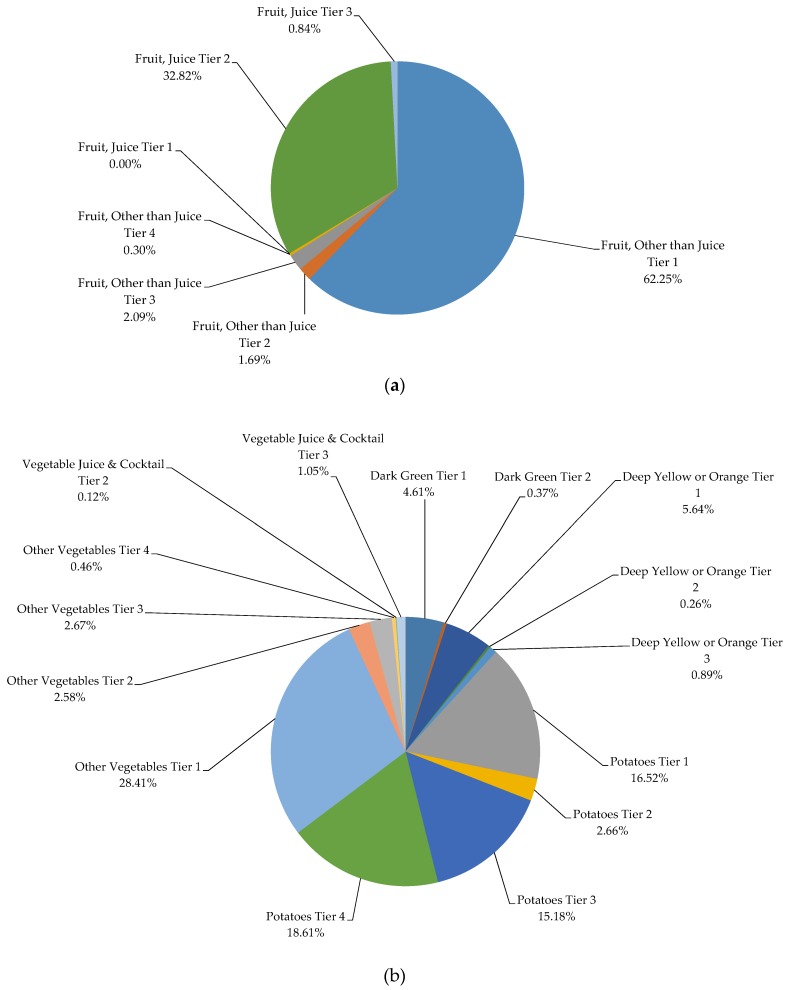Figure 2.
Weighted analysis of percentage of energy intake (kcal) within the (a) Fruit Group, (b) Vegetable Group; (c) Vegetable and Fruit Group; (d) Grain Products; (e) Milk and Alternatives; (f) Meat Group; (g) Meat Alternatives Group; (h) Meat and Alternatives Group, using the Health Canada Surveillance Tool Tier system among Canadians ≥19 years *. * Tiers are based on Health Canada’s Surveillance Tool [9] and defined generally as follows: Tier 1–3 foods are compliant with EWCFG and Tier 4 foods are not recommended by the EWCFG. Tier 1 foods are foods that do not exceed lower thresholds for total fat, sugars, and sodium; Tier 2 foods do not exceed up to 2 lower thresholds for total fat, sugars or sodium, without exceeding any upper thresholds; for the Vegetables and Fruit and Grain Products food groups. Tier 3 are foods that exceed all 3 lower thresholds without exceeding any upper thresholds or exceed only one upper threshold, while Tier 4 foods exceed at least 2 upper thresholds for total fat, saturated fat, sugars, or sodium. Within the Milk and Alternatives and Meat and Alternatives food groups, Tier 3 foods exceed all 3 lower thresholds without exceeding any upper thresholds for total fat, sugars, or sodium (irrespective of saturated fat) or exceed only one of these 3 thresholds or foods that only exceed the upper saturated fat threshold; within these 2 food groups foods that exceed at least 2 upper thresholds for total fat, sugars, or sodium were classified as Tier 4. Where lower thresholds entail: total fat ≤3 g/RA, sugars ≤6 g/RA, and sodium ≤140 mg/RA; and upper thresholds are: total fat >10 g/RA, sugars >19 g/RA, sodium >360 mg/RA, and saturated fat >2 g/RA. Full details are shown in Table S1.




